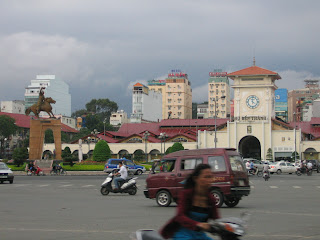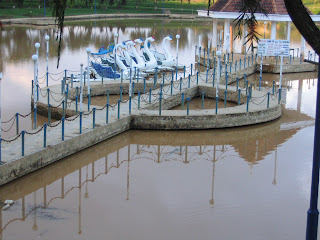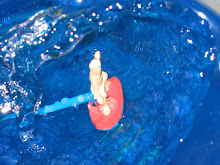So how was the trip? It was an experience. Would I do it again? You bet.
From the Rockies to Connecticut and Maine to Vietnam, I had such a variety of experiences this summer and fall. What they had in common is that I was on my bike. But they were worlds apart. The dry Rockies are very different from the wooded East Coast. The mountains are not as high in the East Coast. The East Coast is much greener that the Rockies. But the Rockies, with the exception of the National Parks, are empty. I enjoyed the wide open spaces and the solitude.
The East Coast has many people and places. You can't go far before you enter another town. I enjoyed the woods and lakes of the East Coast. I especially enjoyed the coastline of Maine.
But of all the travelling, Vietnam was by far the most different. It was ten times more green than Maine, 20 times flatter than the Rockies, and 15 times more populated than the East Coast of the United States. However, Vietnam was 100% safer for riding as bikes are very common in Vietnam.
At the end of my trip, after I landed in San Francisco, I chose to ride BART home. I had to reassemble my bike in the BART station. The BART station agent proved helpful as he walked over and said, "Hey buddy, you can't lean that bike box there."
I replied, "Okay, but where can I throw away the bike box?"
The agent said, "You will have to throw it outside the BART station."
Really? I thought. You mean, I will have to drag my suitcase, bike, and a cardboard box all outside. Instead, I asked, "can I break down and cut up the box here and dispose of it in a BART garbage can?"
He answered by grunting. How interesting, in America, I have to tear apart a perfectly good bike box so I can dispose of it, while in Vietnam, I would save the bike box so someone could reuse it or so I could sell it to someone.
In Vietnam, I bought a suitcase so I could easily place my luggage on the plane. I had a 2-bag limit to the amount of luggage I could bring, so I bought a large suitcase. On my flight to Vietnam, I actually checked 4 bags - my bike box and three panniers; I brought 2 bags - my handlebar bag and another pannier with me as carryon luggage. In San Francisco, I was not charged for being over the bag limit or for a bike, but in Vietnam (for my return trip to S.F.), I did not exceed the number of bags, but they did charge me for the oversized bike box.
Bike and New Suitcase Back in Oakland.

I found this great mosquito repellant while in Vietnam. It's manufactured by Jumbo. It has a vial of mosquito repellant that is vaporized from the top of a porous tube. Capillary action brings the repellant to the top of the tube where it is vaporized. The continuous vaporizing of the repellant forms gradient which pushes the repellant from inside the vial to the top of the tube.
Although I still saw one or two mosquitos while using this, I think it was generally useful.
Jumbo Mosquito Repellant.




























































